Are you ready to elevate your archery game? Whether you’re a seasoned archer, an outdoor sports enthusiast, or a member of the hunting community, mastering the art of compound bows can take your skills to a whole new level. In this comprehensive guide, we will explore everything you need to know about compound bows—from their mechanics and history to expert tips and practical advice. Read on to discover how to enhance your archery experience with this remarkable piece of technology.
What Is A Compound Bow?
A compound bow is a modern bow that uses a system of cams, pulleys, and cables to provide superior power and accuracy. Unlike traditional bows, which rely solely on the archer’s strength, compound bows utilize mechanical advantages to make drawing and holding the bow easier. The key components of a compound bow include:
- Cams: These are the heart of the compound bow’s mechanism, responsible for the unique draw cycle and providing the “let-off” that makes holding the bow at full draw easier.
- Cables: These connect the cams and transfer energy to the bowstring.
- Limbs: The flexible arms of the bow that store and release energy when the bowstring is released.
Compound bows are known for efficiency and power. It allows archers to hold a smaller percentage of the draw weight at full draw, enabling longer aiming times and more accurate shots.
How Does A Compound Bow Work?
Compound bows work fascinating and complex. At its core, the cam system provides a mechanical advantage that traditional bows lack. When you draw the bowstring, the cams rotate, reducing the effort needed to hold the string at full draw. This reduction in effort, known as “let-off,” allows archers to aim more precisely without fatigue.
Compound bows draw smoother and controlled, thanks to the cam system. This makes it easier for archers to shoot consistently. Additionally, compound bows can deliver higher arrow speeds due to their efficient energy transfer from the limbs to the bowstring.
History Of The Compound Bow
The compound bow’s history is a testament to human ingenuity. Who invented the compound bow? This revolutionary weapon was invented by Holless Wilbur Allen in 1966. Allen’s design featured a system of pulleys and cables that dramatically improved the bow’s efficiency and power. Over the years, the compound bow has undergone numerous advancements and refinements, becoming the preferred choice for many archers and hunters.

Significant milestones in the development of compound bows include the introduction of the single-cam bow in the 1980s, which simplified the design and reduced maintenance, and the creation of parallel limb designs that improved stability and reduced vibration.
Choosing The Right Compound Bow
Selecting the right compound bow is crucial for the maximum performance. Here are some factors to consider:
- Draw length: This is the distance you pull the bowstring before it stops. It’s essential to choose a bow with an adjustable draw length that matches your arm span.
- Draw weight: This is the amount of force required to draw the bowstring. Beginners should start with a lower draw weight and gradually increase it as their strength improves.
- Purpose: Consider what you’ll use the bow for—hunting, target shooting, or both. Hunting bows typically require higher draw weights for better penetration, while target bows prioritize accuracy and consistency.
For beginners, it’s recommended to start with a compound bow that offers adjustable settings and easy maintenance. Advanced users can opt for specialized bows tailored to their specific needs.
Also Read :
What’s Better for You: Crossbow Vs Compound Bow?
Using A Compound Bow: Tips And Techniques
Mastering compound bow techniques can significantly enhance your accuracy and performance. Here are some basic tips for beginners:
- Stance and grip: Maintain a balanced stance with your feet shoulder-width apart. Hold the bow with a relaxed grip to avoid torque.
- Drawing and Anchoring: Draw the bowstring smoothly and anchor it consistently at a fixed point on your face, such as the corner of your mouth.
- Aim and release: Use your dominant eye to aim through the sight, and release the bowstring gently for a smooth shot.
For advanced archers, focusing on improving form, practicing with different arrow weights, and incorporating mental techniques can help achieve enhanced accuracy and consistency. Always prioritize safety by wearing protective gear and following proper shooting protocols.
Maintenance And Care
Proper maintenance is essential for keeping your compound bow in top condition. Here are some routine tasks to remember:
- String and cable inspection: Regularly check for fraying or wear and apply bowstring wax to keep them supple.
- Limb and Riser Check: Inspect the limbs and risers for cracks or damage, and ensure all screws and bolts are tightened.
- Storage: Store your compound bow in a cool, dry place, preferably in a padded case, to prevent damage and prolong its lifespan.
Common issues like misaligned cams or worn-out strings can be addressed with regular maintenance. If you encounter more complex problems, professional assistance is recommended.
Expert Opinions
To gain deeper insights into compound bows, we consulted some of the industry’s experts.
Legendary archer and bowhunter Fred Bear once stated,
The history of the bow and arrow is the history of mankind.
This profound observation highlights the significant connection between archery and human civilization.
Champion archer Jane Doe remarks.
Switching to a compound bow revolutionized my performance. The precision and consistency I achieved were unmatched.
Her experience illustrates the transformative impact of modern compound bow technology on competitive archery.
Additionally, champion archer and coach Mary Johnson emphasizes,
Practicing with the right equipment and properly maintaining your bow can significantly enhance your performance.
Practical Tips
- Consistent practice: Dedicate specific time each week to practice, fostering muscle memory and enhancing accuracy.
- Join an archery club: Becoming part of a community offers valuable support, mentorship, and opportunities to participate in competitions, boosting your skills.
- Explore Different Equipment: Don’t hesitate to experiment with various bows, arrows, and accessories to discover what ideally suits your style and goals.
- Maintain a training journal: Keep a record of your performances, techniques, and adjustments made during practice sessions to monitor your progress.
- Stay informed: Take advantage of online resources, forums, and workshops to broaden your knowledge and stay up-to-date with the latest advancements in archery techniques and technologies.
Conclusion
You can elevate your archery experience to new heights by mastering compound bows. This book covers all essential aspects for archery enthusiasts, outdoor sports enthusiasts, and hunters, from understanding the intricate mechanics and history to choosing the right equipment and honed techniques.
Engage with our community of archers, share your experiences, and stay updated on the latest advances in compound bow technology. Success lies in practice and continuous learning. With compound bows, there’s always something new to discover, whether you are an experienced archer or a novice.
Are you ready to take your archery skills to the next level? Subscribe to our newsletter and join our passionate archers community.
Recommended Compound Bow Reviews :
Unveiling the Best Compound Bow For Beginners – Reviews and Recommendations
The Best Compound Bow under 500 | Reviews & Recommendations
Best Compound Bow For Women – A Comprehensive Buyer’s Guide
The Top 6 Best Compound Bow For Women: Find Your Perfect Fit
Finding the Best Compound Bow Under 500$: Your Comprehensive Guide
7 Best Compound Bow for Beginners for Starting Your Archery Journey
6 Mind-Blowing Best Compound Bow For Women
Frequently Asked Questions (FAQs)
What Is The Best Draw Weight For A Beginner?
For beginners, a draw weight of 20 to 30 pounds is usually ideal, allowing for easy handling while developing proper technique. As strength and skill increase, archers can gradually move to higher draw weights.
How Often Should I Maintain My Compound Bow?
Regular maintenance should be performed at least every few months, or after significant use, particularly after the archery season. Routine checks on strings, cables, and physical components can prevent issues.
Can I Use A Compound Bow For Target Shooting?
Yes, compound bows are excellent for target shooting as they offer higher accuracy and consistency. Choose a target bow that prioritizes stability and precision.
What Is The Difference Between A Single Cam And A Dual-Cam Bow?
A single-cam bow typically has one cam that provides a smoother draw cycle and less maintenance, while a dual-cam bow offers greater speed and efficiency by utilizing two cams, which can be more complex in setup.
How Do I Choose The Right Arrows For My Compound Bow?
Choosing arrows should depend on your bow’s draw weight and length, as well as the type of shooting you plan to do. It’s advisable to consult an arrow selection chart or speak to an expert for tailored recommendations.
Resources
Books: “The Traditional Bowyer’s Bible” by Jim Hamm & “Archery Fundamentals” by Teresa Johnson
Websites: Archery360 (archery360.com) & Lancaster Archery Supply (lancasterarchery.com)
Videos: “Compound Bow Basics” on YouTube & “Advanced Archery Techniques” from Vimeo
Recommended Posts
- The Ultimate Guide To Choosing Between Compound Bow vs Crossbow
- How To Carry A Bow – Tips & Techniques For Archers
- Ultimate Guide To Installing Compound Bow Arrow Rest
- The Ultimate Guide To The Best Archery Brands Of Compound Bows
- How To Utilize Recurve Bow Sights: A Comprehensive Guide
- The Archer’s Craft: Understanding Parts Of Recurve Bow

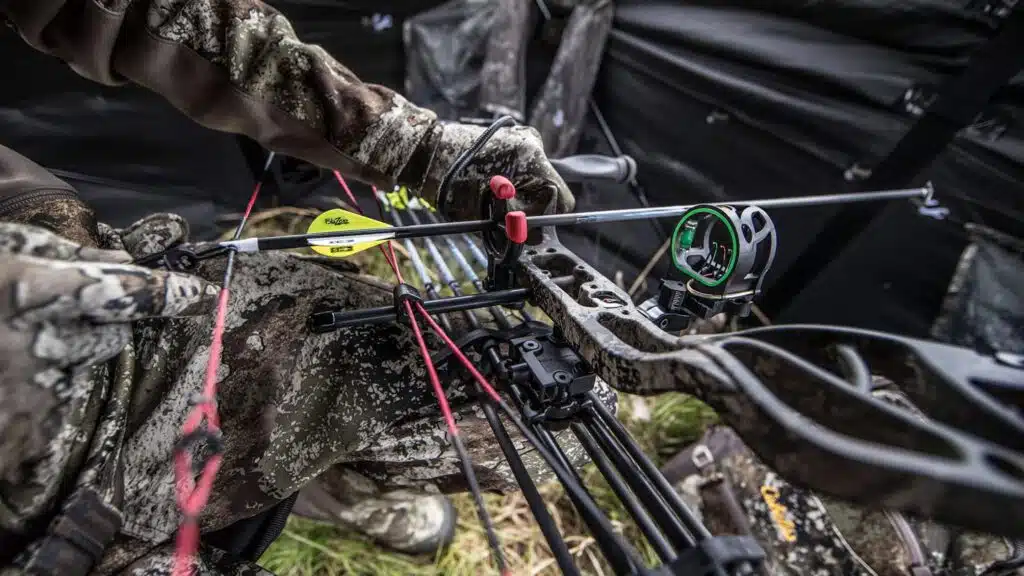

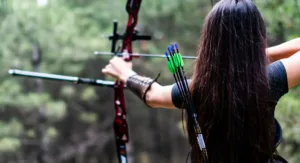
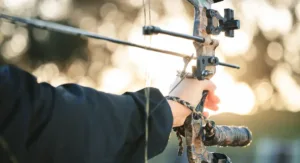
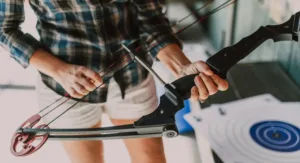
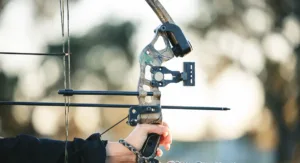
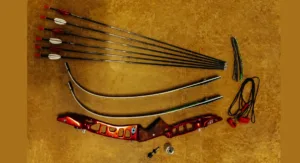
8 thoughts on “Master The Art Of Compound Bows – Comprehensive Guide”
Comments are closed.